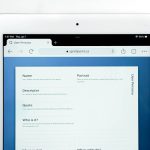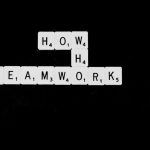Imagine building a house. Instead of creating every brick from scratch, wouldn’t it be better to have a set of bricks ready to go—already shaped, colored, and measured? That’s the magic of a design system. It’s the ready-made kit of parts for building digital experiences.
Now, let’s turn things up a notch. What if you had to design houses for five different neighborhoods? Each one has its own style and flavor. That’s where a multi-brand design system comes in. And at the heart of this system? Tokens. Tiny decisions that control how everything looks and feels—at scale!
What is a Design System?
A design system is a collection of reusable components, guided by rules and standards. It promotes consistency, speeds up development, and keeps your brand looking sharp.
Think of it as the blueprint, toolbox, and instruction manual—rolled into one.
Core parts of a design system include:
- UI Components – Buttons, input fields, dropdowns
- Design Tokens – The little details, like colors, spacing, typography
- Documentation – The rules for using everything correctly
- Code Implementation – Shared code packages developers use
But when your system supports more than one brand, things get tricky.
Welcome to the Multi-Brand Universe
Imagine you’re designing for a group of products—each with its own name, its own colors, and its own personality.
But underneath, they share the same skeleton. How do you keep them looking unique while using the same base components?
That’s where token-driven design comes to the rescue.

Let’s Talk Tokens
Tokens are the DNA of your design.
They define values like:
- Color
- Font size
- Spacing
- Border radius
- Shadow
Each token has a name and a value. For example:
"color-primary": "#FF5733"
"spacing-medium": "16px"
"font-size-small": "14px"
Boring? Maybe. Powerful? Oh yes!
Why? Because you can change one token and update your entire app instantly. Want to switch your primary color for a Valentine’s Day theme? Change one value. Boom. Everything updates.
How Tokens Help with Multi-Brand
Let’s say you support three brands: Zenify, Blizzy, and GlowNow.
Their components are the same—same buttons, same structure—but their branding is different.
Instead of rewriting styles for each brand, you define brand-specific tokens:
Zenify:
"color-primary": "#3A86FF"
"font-family-base": "Roboto"
Blizzy:
"color-primary": "#FF005C"
"font-family-base": "Lato"
GlowNow:
"color-primary": "#FDCB6E"
"font-family-base": "Helvetica Neue"
Now, whenever you use the token “color-primary”, it adapts to the brand. You’re coding once, theming everywhere.
One system. Many brands. Maximum impact.
Token Structure
Tokens can be grouped into layers. It helps manage complexity.
- Core Tokens – The design language, shared by all brands
- Brand Tokens – Overrides that bring personality
- Component Tokens – Specific to each UI element
For example: A button might use
- A core token for spacing (e.g., spacing-medium)
- A brand token for color (e.g., color-primary)
- A component token for border radius (e.g., button-radius)
This layered approach makes your system flexible, scalable, and easy to maintain.
Tools That Can Help
Worried about managing all those tokens? Good news—there are tools for that!
- Style Dictionary – Turns design tokens into code for different platforms
- Figma Tokens Plugin – Syncs tokens into your design files
- Token Studio – Lets you manage tokens visually
They automate the boring parts so you can focus on creating amazing UIs.

Scaling Up
As your system grows, so does the complexity. But don’t worry, you’ve got this.
Tips to scale your token system:
- Start simple – Begin with color and spacing
- Name smart – Use consistent, readable names
- Organize – Group tokens in files or folders by type or brand
- Automate – Use scripts and tools to update and build
- Document – Always explain how and why to use each token
When done well, a token-powered system becomes a trusted engine. It saves time and creates alignment across teams.
Common Mistakes to Avoid
- Too Many Tokens – More isn’t always better. Only include what’s needed.
- Token Spaghetti – Keep names clear and structured. Avoid chaos.
- Lack of Governance – Have rules for adding or updating tokens.
- Not Testing – Check how tokens work across all brands.
Treat tokens like code. Review them. Avoid duplication. Keep it clean!
Real-World Example
Big companies like Shopify, IBM, and Salesforce use token-driven systems. Their design systems—like Polaris and Carbon—empower multiple teams, products, and brands.
They ship fast and look good while doing it.
The Future is Tokenized
As digital experiences become more complex, design systems need to evolve too.
Tokens are at the center of that evolution. They bring power, flexibility, and scalability to everything you design.
And in a multi-brand world, they’re non-negotiable.
In Conclusion
If you’re building a design system for just one brand, tokens will make your life easier. If you’re building for multiple brands, tokens are your secret superpower.
Design once. Theme endlessly. Scale confidently.
So go ahead—build your system around tokens. Your future self (and team) will thank you.







